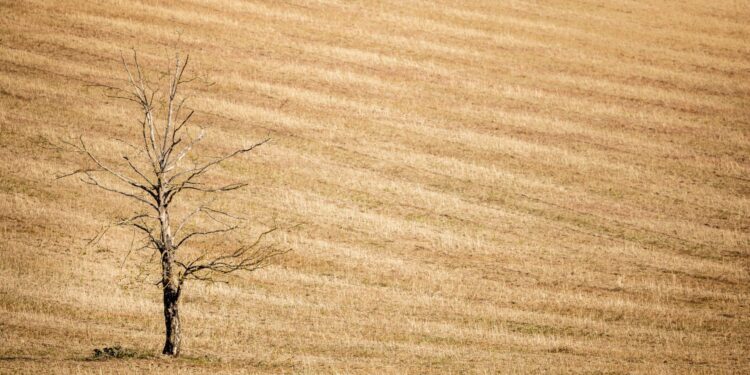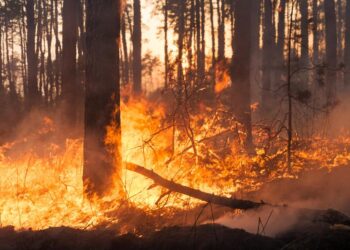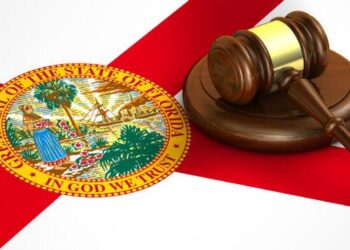California is experiencing one of the driest starts to spring in decades, data showed Friday, and absent a heavy dose of April and May showers the state’s drought will deepen and that could lead to stricter rules on water use and another devastating wildfire season.
New readings showed the water in California’s mountain snowpack sat at 38% of average. That’s the lowest mark since the end of the last drought in 2015; only twice since 1988 has the level been lower.
State officials highlighted the severity of the dismal water numbers as they stood at a snow measuring station south of Lake Tahoe, where the landscape included more grass than snow. At the deepest point measured there, there was just 2.5 inches of snow.
“You need no more evidence than standing here on this very dry landscape to understand some of the challenges we’re facing here in California,” said Karla Nemeth, director of the California Department of Water Resources. “All Californians need to do their part.”
Nearly all of California and much of the U.S. West is in severe to extreme drought, according to the U.S. Drought Monitor. Last July, California Gov. Gavin Newsom asked people to cut their water use by 15% compared to 2020 levels, but so far consumption is down just 6%. State reservoirs are filled far below normal levels.
About a third of California’s water supply comes from the snow as it melts and trickles into rivers and reservoirs. April 1 is when the snowpack typically is at its peak and the date is used as a benchmark to predict the state’s water supply in the drier, hotter spring and summer months. The next few weeks will be critical to understanding how much of the melting snow is ending up in state reservoirs instead of evaporating or seeping into parched ground.
“The big unknown is how much of that water will make it into the reservoirs,” said Sean de Guzman, manager of snow surveys for the state Department of Water Resources.
The nearly 11 inches worth of water sitting in snow in the Sierra Nevada along California’s eastern edge is the lowest reading since the depth of the last drought seven years ago, when California ended winter with just 5% of the normal water levels in the mountains, according to the department.
The numbers mark a disappointing end to California’s winter, which began with heavy December storms that put the snowpack at 160% of the average. But there has been little precipitation since Jan. 1.
A storm that brought significant rain and snow to parts of the state earlier this week did little to change the course of the drought. And warmer than usual temperatures have led to the snow melting and evaporating faster than normal, state officials said.
Meanwhile, federal officials announced Friday that municipal and industrial users that rely on water from the Central Valley Project will get less than planned. The project is a 400-mile system of reservoirs, canals and dams that stores and delivers water in the central part of the state.
About 70 of the project’s 270 contractors receive water for household and business use in the agricultural region that includes the greater Sacramento and San Francisco Bay Area. They had been told to expect 25% of their requested supply earlier this year, but the U.S. Bureau of Reclamation now says they will only get what’s needed for critical activities such as drinking and bathing. A lot of urban water use goes to outdoor landscaping.
Farmers who rely on water from the federal project were told earlier this year not to expect any water.
Newsom’s administration has faced some criticism for failing to adopt more aggressive statewide conservation mandates, as former Gov. Jerry Brown did when he called for a 25% cut in water use in 2015, in the fourth year of the drought. That was a mandate, unlike Newsom’s call for a voluntary 15% reduction.
With the latest drought now in its third year, the state has adopted some water use restrictions such as banning people from watering their lawns after rain. But the administration broadly says local governments are best poised to adopt further restrictions. On Monday, Newsom called on the state water board to consider requiring local governments to move into the second phase of their drought contingency plans, which assume a 20% water shortage.
But some water experts say the state’s approach makes sense. After the last drought, cities and local water districts were required to come up with contingency plans for drought that consider local needs. Some cities will respond to worsening drought by watering parks and other green spaces less or limiting the days people can water their lawns, while others may step up patrols to catch water wasters.
Jeffrey Mount, senior fellow at the nonpartisan Public Policy Institute of California’s Water Policy Center, said blanket conservation requirements can be inefficient in such a big state with vastly different conditions across regions.
“The only rationale you can give for an absolute, blanket approach is the ‘we’re all in this together’ sentiment,” he said. “That’s more social than the actual economic and physical reality.”









